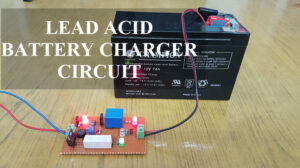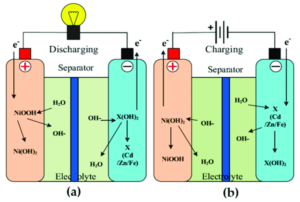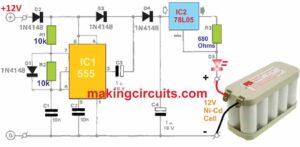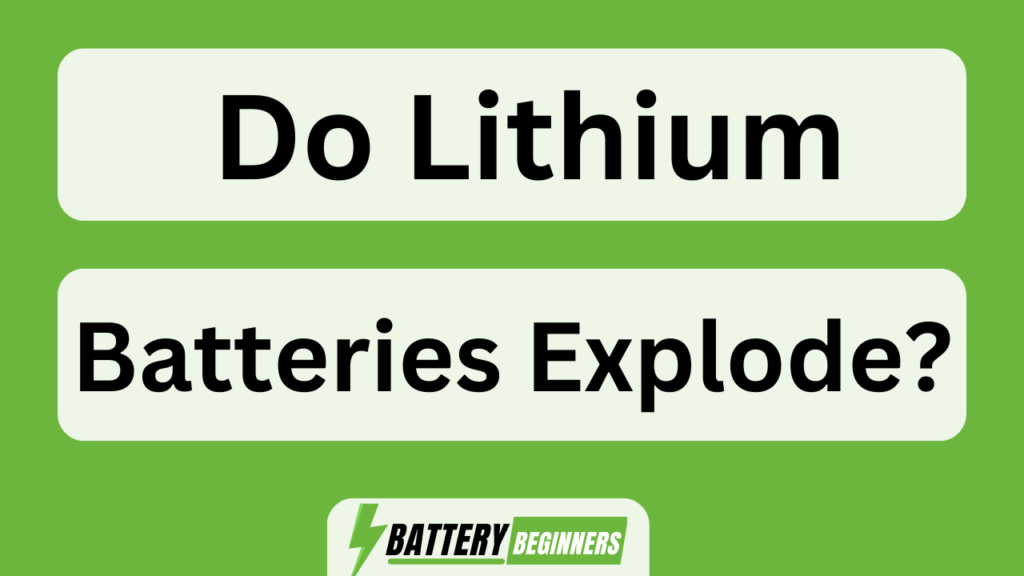Welcome to our in-depth article on battery charging! Just like the conductor of an orchestra, choosing the right charging current for your batteries is crucial for optimal performance.
In this guide, we’ll explore the technicalities behind determining how many amps your batteries should be charged with. Whether you’re dealing with lead-acid, lithium-ion, or nickel-based batteries, understanding their unique requirements will ensure a safe and efficient charging process.
So grab your baton and let’s dive into the world of battery charging!
Key Takeaways OF How Many Amps Should The Batteries Be Charged?
- Battery capacity should be assessed in milliampere-hours (mAh).
- The charging time can be calculated by dividing the battery capacity by the charging current.
- For electronic batteries, it is recommended to charge at a rate between 0.5C and 1C.
- When charging batteries for vehicles, the charging speed should be chosen carefully as higher amperage can shorten battery life while slower charging extends it.
Understanding Battery Types and Their Charging Requirements
The batteries should be charged according to their specific requirements. Battery charging techniques vary depending on the type of battery and understanding battery chemistry is crucial in determining the appropriate charging method.
Different battery chemistries have different voltage thresholds, charge rates, and temperature limitations that must be considered for safe and efficient charging. For example, lead-acid batteries require a constant current charge followed by a constant voltage charge to prevent overcharging and maximize battery life.
Lithium-ion batteries, on the other hand, require a more complex charging algorithm that takes into account factors such as state of charge, cell balancing, and temperature control. Understanding these nuances is essential in selecting the right charging technique for each battery type.
Factors that determine the ideal charging current will be discussed in the subsequent section.
Factors that Determine the Ideal Charging Current
Factors that determine the ideal charging current include the type of battery and its capacity. Battery capacity refers to the amount of charge a battery can hold, usually measured in ampere-hours (Ah).
The charging time is influenced by both the battery’s capacity and the charging current. A higher charging current will result in a shorter charging time, but it must be within safe limits to prevent damage to the battery.
It is important to consult the manufacturer’s specifications or guidelines for recommended charging currents for specific batteries. Charging lead-acid batteries, for instance, requires additional considerations such as temperature compensation and voltage regulation. These factors ensure optimal performance and longevity of lead-acid batteries during the charging process.
Charging Lead-Acid Batteries
When charging lead-acid batteries, it’s important to consider temperature compensation and voltage regulation for optimal performance. Understanding charging techniques is crucial in ensuring battery maintenance and care.
Temperature compensation involves adjusting the charging current based on the battery’s temperature, as extreme temperatures can affect the battery’s efficiency and lifespan.
Voltage regulation ensures that the charging voltage remains within safe limits to prevent overcharging or undercharging, which can damage the battery.
Additionally, regular monitoring of electrolyte levels and specific gravity is necessary for proper maintenance. By following these guidelines, you can extend the life of your lead-acid batteries and maximize their performance.
Now let’s transition into discussing charging lithium-ion batteries without missing a beat.
Charging Lithium-Ion Batteries
To properly charge lithium-ion batteries, it’s important to understand the recommended charging voltage and current. Lithium-ion batteries are typically charged using a constant current-constant voltage (CC-CV) charging technique. This technique involves two stages: the first stage is a constant current phase where the battery is charged with a specific current, and the second stage is a constant voltage phase where the battery is charged with a specific voltage until it reaches its maximum capacity. The recommended charging current for lithium-ion batteries varies depending on their capacity and manufacturer specifications. It is crucial to follow these guidelines to maximize battery lifespan and ensure safe charging. Charging lithium-ion batteries with excessive current can cause overheating and damage to the battery cells, while too low of a charging current can result in incomplete charging. Now let’s move on to discussing the next topic of charging nickel-based batteries.
Charging Nickel-Based Batteries
The recommended charging technique for nickel-based batteries differs from that of lithium-ion batteries.
When it comes to charging nickel cadmium (NiCd) batteries, a constant current method is employed. This means that the battery is charged with a fixed amount of current until it reaches its full capacity. It is important to note that overcharging NiCd batteries can lead to memory effect, which reduces their overall capacity.
On the other hand, nickel metal hydride (NiMH) batteries require a slightly different approach. They are typically charged using a combination of constant current and constant voltage methods. Initially, a fixed amount of current is supplied until the battery reaches about 70-80% capacity. After that, the charger switches to a constant voltage mode to top off the remaining charge.
Now let’s move on to discussing the charging technique for rechargeable alkaline batteries…
Charging Rechargeable Alkaline Batteries
Rechargeable alkaline batteries can be charged using a combination of constant current and constant voltage methods. This allows for efficient and safe charging, extending the lifespan of the batteries. When charging rechargeable alkaline batteries, it is important to follow specific charging protocols to ensure optimal performance.
To successfully charge rechargeable alkaline batteries, consider the following:
- Constant Current Charging: This initial stage involves supplying a fixed amount of current to the battery until it reaches a specific voltage level. This prevents overcharging and controls temperature rise.
- Constant Voltage Charging: Once the battery reaches the desired voltage level, the charger switches to a constant voltage mode. This keeps the voltage within safe limits and allows for complete charging without overloading.
By understanding and utilizing these charging protocols for rechargeable alkaline batteries, you can maximize their capacity and longevity. Following proper battery charging procedures is crucial in maintaining battery health and ensuring reliable performance.
In the next section, we will discuss tips for properly charging various types of batteries.
Tips for Proper Battery Charging
Follow these tips to ensure you charge your batteries properly.
When it comes to battery charging techniques, there are a few key factors to consider in order to maximize battery lifespan. First and foremost, always use the appropriate charger for your specific battery type. This will prevent overcharging or undercharging, both of which can lead to decreased performance and shortened lifespan.
Additionally, it is crucial to charge at the correct amperage. Charging at too high an amperage can generate excessive heat and damage the battery, while charging at too low an amperage may result in incomplete charging and reduced capacity.
Furthermore, avoid interrupting the charging process once it has started as this can also negatively impact overall performance. By following these guidelines, you can ensure that your batteries are charged optimally and ready for use without compromising their longevity.
Moving on to common charging mistakes to avoid…
Common Charging Mistakes to Avoid
One common mistake to avoid when charging is using the wrong charger for your battery type. This can lead to overcharging, which can significantly reduce the lifespan of your battery and even pose safety risks.
It is essential to understand the specific charging requirements of your battery and use a charger that matches those specifications. Additionally, proper battery maintenance is crucial in avoiding overcharging.
Regularly inspecting your batteries for any signs of damage or wear, such as corrosion or leakage, can help prevent overcharging and ensure their optimal performance.
By following these guidelines and practicing proper battery maintenance, you can extend the lifespan of your batteries and maximize their efficiency.
In the subsequent section about charging batteries for different applications, we will explore how to determine the appropriate charging parameters based on specific usage requirements without risking overcharging.
Charging Batteries for Different Applications
When it comes to charging batteries for different applications, there are key points to consider.
Firstly, charging batteries for electronics requires a precise approach in order to maximize their lifespan and performance.
Secondly, charging batteries for vehicles involves understanding the specific requirements of each vehicle type and ensuring that the charging process is done safely and efficiently.
Lastly, by paying attention to these important factors, we can ensure that our batteries are charged correctly and ready to power our devices or vehicles as needed.
Charging Batteries for Electronics
To charge the batteries for electronics, it’s important to determine the appropriate amperage. Understanding battery chemistry and maximizing battery lifespan are key factors in this process. Here are four essential guidelines to consider:
- Assess the battery capacity: Determine the capacity of your battery, typically measured in milliampere-hours (mAh). This value indicates how much energy the battery can store.
- Calculate charging time: Divide the battery capacity by the charging current to estimate how long it will take to fully charge the battery.
- Optimal charging current: It is recommended to charge electronic batteries at a rate between 0.5C and 1C, where C represents the battery’s capacity.
- Use a dedicated charger: To ensure precise control over charging parameters and prevent overcharging or undercharging, utilize a charger specifically designed for electronic batteries.
By following these guidelines, you can effectively charge your electronic batteries and ensure their longevity.
Moving forward to discussing ‘charging batteries for vehicles,’ it is vital to understand proper charging techniques without compromising safety and performance.
Charging Batteries for Vehicles
To effectively charge the batteries for your vehicle, it’s important to understand proper charging techniques without compromising safety and performance. When it comes to battery charging for electric vehicles (EVs), one key factor to consider is the impact of charging speed on battery lifespan. Charging at a higher amperage can shorten the overall life of the battery, while slower charging can help extend its longevity. It’s crucial to strike a balance between convenience and preserving battery health.
To give you an idea of different charging speeds, here’s a comparison table:
| Charging Speed | Amperage |
|---|---|
| Level 1 | 12 |
| Level 2 | 30-50 |
| DC Fast Charging | 100+ |
Understanding these options allows you to choose the most suitable charging speed for your needs. Taking precautions during the charging process ensures both safety and optimal performance. Transitioning into the subsequent section about ‘battery charging safety precautions,’ we’ll explore essential steps to follow when handling EV batteries.
Battery Charging Safety Precautions
Make sure you know how many amps your batteries should be charged with to ensure safety. Charging batteries at the correct amperage is crucial to prevent overcharging and potential damage or even explosions.
Here are three important factors to consider when it comes to battery charging safety precautions:
- Battery charging time: It is essential to follow the recommended charging time provided by the battery manufacturer. Overcharging can lead to overheating and shorten the lifespan of the battery.
- Battery charging temperature: Charging batteries in extreme temperatures, whether too hot or too cold, can cause irreversible damage. It is crucial to charge batteries within the recommended temperature range specified by the manufacturer.
- Use a proper charger: Select a charger that is specifically designed for your battery type and size. Using an incorrect charger can result in inadequate charging, leading to reduced performance and potential safety hazards.
By adhering to these battery charging safety precautions, you can extend the life of your batteries while ensuring safe and efficient operation.
Frequently Asked Questions
Can I use the same charging current for all types of batteries?
Yes, the charging current can be the same for all types of batteries. However, it is important to determine the optimal charging current for each battery type to ensure efficient and safe charging.
How long does it typically take to fully charge a lead-acid battery?
To optimize the charging time for lead-acid batteries, it is important to consider factors such as battery capacity, charger current, and ambient temperature. A typical lead-acid battery can take several hours to fully charge.
What are the risks of overcharging a lithium-ion battery?
Overcharging lithium-ion batteries can lead to thermal runaway, causing overheating, venting, and even explosion. To prevent overcharging, use a dedicated charger with built-in safety features like voltage and temperature monitoring, or follow manufacturer’s guidelines for charging times and currents.
Are there any specific charging techniques or precautions for nickel-based batteries?
What are the specific charging techniques and precautions for nickel-based batteries? To ensure optimal performance and safety, it is important to follow proper charging procedures such as using a suitable charger and avoiding overcharging or overheating.
Can rechargeable alkaline batteries be charged using any type of charger?
Rechargeable alkaline batteries can be charged at home using a dedicated battery charger. This offers several benefits such as optimized charging algorithms, protection against overcharging, and the ability to charge multiple batteries simultaneously.
Conclusion
In conclusion, understanding the ideal charging current for batteries is crucial to maximize their performance and lifespan. Different battery types require different charging methods.
Whether it’s lead-acid, lithium-ion, or nickel-based batteries, following the recommended charging guidelines ensures efficient and safe charging. It is essential to avoid common charging mistakes and take necessary safety precautions during the process.
Remember, ‘An ounce of prevention is worth a pound of cure.’ So, charge your batteries correctly to avoid any potential damage or accidents in the future.







